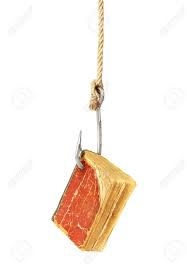Genres, Themes and the Hook of Your Book
- Author Bruce Shields

- Feb 3, 2021
- 5 min read

When starting a new book, it’s essential to know where the story is going or what the point is. I have read some great writers for the never-ending storylines of daytime television that would not survive within book covers’ constraints.
I may be guilty of this as well. My “short story,” Pandemic Dawn, has turned into a series with the fifth novel on the way.
Developing a storyline is crucial. It is the roadmap and “outline” of what will happen and when. This way, you get to where you are going rather than wander endlessly, such as the storylines in soap operas. I was hooked on General Hospital and As the World Turns for quite a while. I loved the interaction between the various characters.
So, first, you must ask yourself, why do people read books? I believe it is for the action, conflict, and consequences within the story. The genre and theme are just the backdrops for your characters to act in.
You could take all of my characters from pandemic Dawn and, instead of a post-apocalyptic fallen world, place them in, for instance, a hospital. They are all working together in a single location on various floors, interacting with each other in their daily lives.
The action may have different catalysts, the conflict may be for various reasons, and the consequences, though severe, may also change. Still, the characters, their personalities, and the events could be quite similar.
Basically, I believe that people read for the action, conflict, and consequence of a story. They choose the genre and theme they like, but the rest is similar.
So, how do we choose?

There are a lot of genres out there for you to choose from. Obviously, you would pick one that fits the story you wanted to tell. Here are a few of the more popular.
Action and Adventure (Call of the Wild, The Three Musketeers)
Classics (To Kill a Mockingbird, Little Women)
Detective and Mystery (The Adventures of Sherlock Holmes)
Fantasy (The Hobbit)
Historical Fiction (The Help, Memoirs of a Geisha)
Horror (The Shinning, Bird Box)
Literary Fiction (Olive, Again)
Romance (Royal Holiday, Brazen and the Beast)
Science Fiction (1984, The Hunger Games)
Short Stories (Florida, This is How You Lose Her)
Suspense and Thrillers (Gone Girl, The 19th Christmas)
True Crime (Catch and Kill, Helter Skelter)

Once you have chosen the genre, you must select a theme for your story. There are many themes as well. Here are a few.
Good vs. Evil (To Kill a Mockingbird)
Love
Forbidden love (Romeo and Juliet)
Family love (My Sister’s Keeper)
Unrequited love (The Phantom of the Opera)
Friendship (The Lord of the Rings)
Redemption (A Christmas Carol)
Courage and Perseverance (Black Hawk Down)
Coming of Age (The Catcher in the Rye)
Revenge (The Count of Monte Cristo)
Man vs.
Man (The Hunger Games)
Self (Lord of the Flies)
Nature (Into the Wild)
Now you have the backdrop, or stage, for your characters to perform. Now you need to develop your storyline. There are a few things you need to figure out.
What is your character’s motivation and goal?
What are their external conflict and internal conflict? Conflict is their baggage or hang-up they can’t seem to overcome.
How you want to set up the first scene. This is the HOOK. You want this to be perfect so your readers will want to continue your book after reading it. Here you write the setting, the action, and the consequence to get the story started.
How this fits into the plot. Does this first scene drive your character to the inciting event that starts the journey, or is this event the plot?
When writing your characters, you want to make them likable. It’s OK to have flaws and issues, but they must seem redeemable, or else your readers won’t relate.

There are some general guidelines for character building.
They should have redeeming qualities.
Have flaws but fewer than good points.
They should struggle but have a backbone, win or lose.
Maybe even a little sarcasm or a slight sense of humor.
Relatable conflict.
Show a shining moment in the first scene (first impression), Maybe a heroic feat, or overcome adversity.
They must feel REAL...Flawed, emotional, poor judgment sometimes. Their lack of human qualities must have a deep-seated reason that is revealed so that readers will have compassion for the character if not relate.
If you write a character who can do everything and accomplish all tasks with no trouble, readers will not relate to it, and your character will feel fake.
Ask yourself about the characters you have loved from books and why you love them.
So, writing the hook. The most important part of your book is making readers want to read. Think of your book as a total, and try to sum up everything into a few sentences.
Yeah, I know, this sounds impossible. However, it can be done. You should be able to give a word picture of the “feel” of your book.
In Pandemic Dawn Book I, the hook was the first few sentences.
"The day no longer mattered. The seasons no longer discernible. The smell of fall leaves, the dew in the early morning, and the aroma of the air after a fresh rain—gone.
Mornings now brought with it the wind and odors of those who had died. No one knew how many were dead, but most knew how many they had lost. No one knew whether the virus claimed the most victims or the government’s steps to combat the infectious and mutating disease."
I tried to set the stage for the coming characters. Right away, readers know the world is very different from before. They also know that the population had been devastated by a virus, and mutations were now taking place.
This fills the reader’s head with What-if and draws them in, wanting to understand more.
So the hook can be to set up the scene, as long as the setting is unique, like the post-apocalyptic scene I described.
Or you could start with a shocking statement. In Pandemic Dawn Book II: Rise of the State, I did just that.
"He looked up into the eyes of his enemy once more. The debris and rocks cut into his joints as his elbows and knees buried themselves into the sun-scorched earth. He slid further this time, and the pain was much more intense. With each breath, dust entered his mouth, and the sand clicked between his teeth as he clenched them together from the pain. He heard a voice inside himself cry out, “Stand up!” and he immediately obeyed. His enemy stood firm casting a shadow that nearly reached where the boy had lain just moments before."
The first few sentences grab the readers and make them want to continue reading. Or, at least that is the hope.
Another hook you could write would be the question. Asking a question that would spark someone’s interest in finding the answer.
I usually place these on the jacket or back cover of my books. Sometimes people will pick p a book, look at the cover, maybe read the jacket, and that’s it.
Your jacket text may be all that grabs your potential reader.
I have noticed at book signings that when there is a line of people, place a smaller table with books a little further from you. It gives those who are not sure they want one a moment to look at the book. I have seen many pick up the book and actually read the first page.
If you have a great hook on the first page, you’ll have another reader!
So you want there to be some action in the first scene. Don’t be tempted to write it at s different pace than the rest of your book, though. That is deceiving, and the reader will be extra disappointed with your book because it was nothing like the first chapter.
Hopefully, this helps you. Feel free to share this or leave me a comment!









Comments